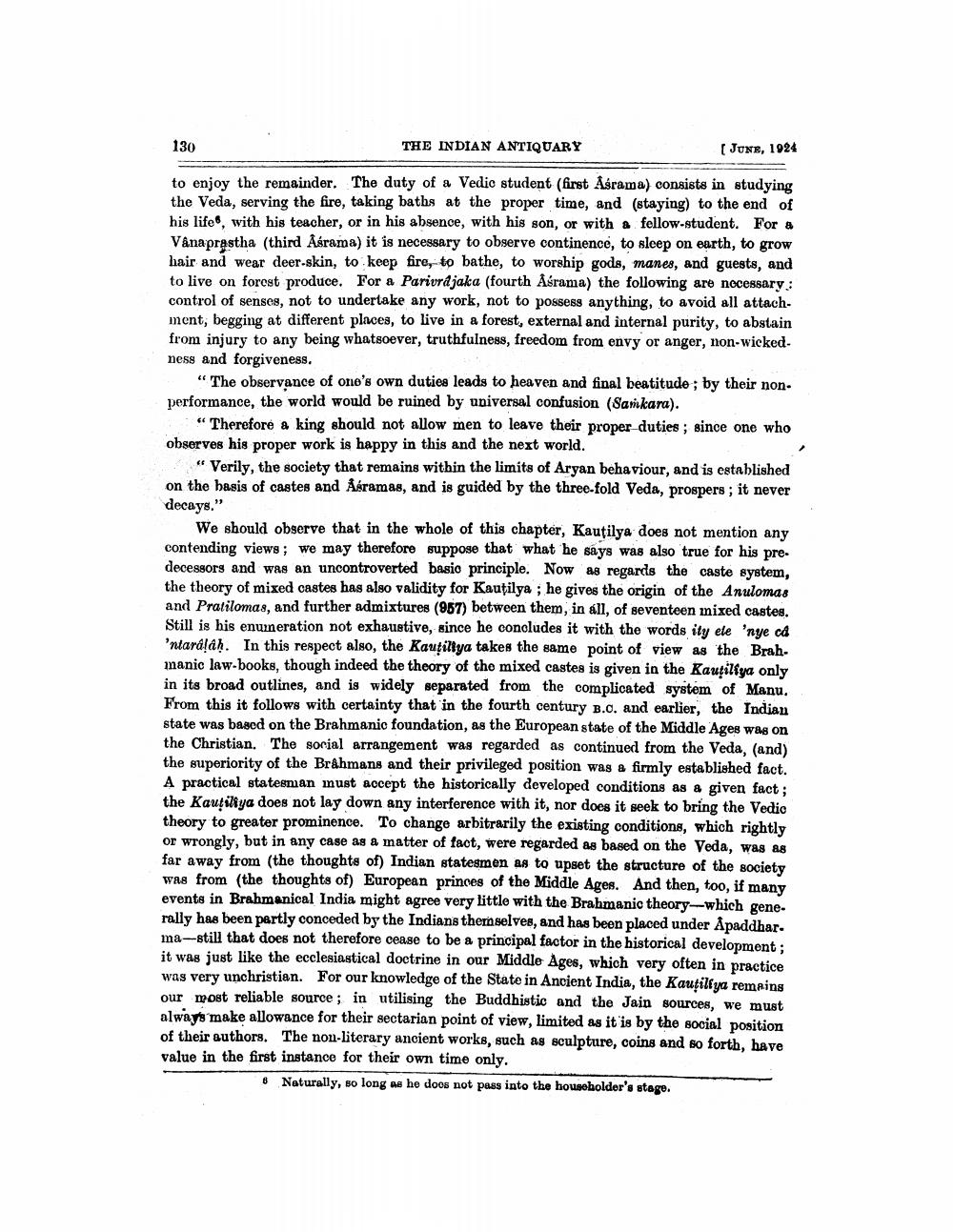________________
130
THE INDIAN ANTIQUARY
(JUNE, 1024
to enjoy the remainder. The duty of a Vedic student (first Asrama) consists in studying the Veda, serving the fire, taking baths at the proper time, and (staying) to the end of his life, with his teacher, or in his absence, with his son, or with & fellow-student. For a Vâna prastha (third Asrama) it is necessary to observe continence, to sleep on earth, to grow hair and wear deer-skin, to keep fire, to bathe, to worship gods, manes, and guests, and to live on forest produce. For a Pariurd jaka (fourth Aśrama) the following are nocessary: control of senses, not to undertake any work, not to possess anything, to avoid all attachment, begging at different places, to live in a forest, external and internal purity, to abstain from injury to any being whatsoever, truthfulness, freedom from envy or anger, non-wicked. ness and forgiveness.
“The observance of one's own duties leads to heaven and final beatitude; by their nonperformance, the world would be ruined by universal confusion (Sankara).
"Therefore a king should not allow men to leave their proper duties; since one who observes his proper work is happy in this and the next world.
"Verily, the society that remains within the limits of Aryan behaviour, and is established on the basis of castes and Asramas, and is guided by the three-fold Veda, prospers; it never decays."
We should observe that in the whole of this chapter, Kautilya does not mention any contending views; we may therefore suppose that what he says was also true for his predecessors and was an uncontroverted basic principle. Now as regards the caste system, the theory of mixed castes has also validity for Kautilya ; he gives the origin of the Anulomas and Pratilomas, and further admixtures (967) between them, in all, of seventeen mixed castes. Still is his enuineration not exhaustive, since he concludes it with the words ity ele 'nye cd 'ntardlah. In this respect also, the Kautillya takes the same point of view as the Brah. manic law-books, though indeed the theory of the mixed castes is given in the Kautilfya only in its broad outlines, and is widely separated from the complicated system of Manu. From this it follows with certainty that in the fourth century B.C. and earlier, the Indian state was based on the Brahmanic foundation, as the European state of the Middle Ages was on the Christian. The social arrangement was regarded as continued from the Veda, (and) the superiority of the Brahmans and their privileged position was a firmly established fact. A practical statesman must accept the historically developed conditions as a given fact; the Kautilya does not lay down any interference with it, nor does it seek to bring the Vedio theory to greater prominence. To change arbitrarily the existing conditions, which rightly or wrongly, but in any case as a matter of fact, were regarded as based on the Veda, was as far away from the thoughts of) Indian statesmen as to upset the structure of the society was from the thoughts of) European princes of the Middle Ages. And then, too, if many events in Brahmanical India might agree very little with the Brahmanic theory--which generally has been partly conceded by the Indians thermselves, and has been placed under Åpaddhar. ma-still that does not therefore cease to be a principal factor in the historical development; it was just like the ecclesiastical doctrine in our Middle Ages, which very often in practice was very unchristian. For our knowledge of the State in Ancient India, the Kautilya remains our most reliable source ; in utilising the Buddhistic and the Jain sources, we must always make allowance for their sectarian point of view, limited as it is by the social position of their authors. The non-literary ancient works, such as sculpture, coins and so forth, have value in the first instance for their own time only.
0 Naturally, so long as he does not pass into the householder's stage.




